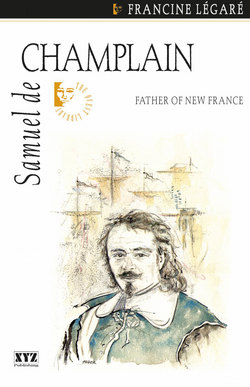Читать книгу Samuel de Champlain - Francine Legaré - Страница 11
На сайте Литреса книга снята с продажи.
ОглавлениеPrologueMystery
To describe Samuel de Champlain physically as fair or dark, or short or tall, would be simply a matter of conjecture. The few paintings of him that have been conserved were done by painters who made use of their imaginations rather than authentic sources. Counterfeit portraits. Certain people even claim that the portrait most often found in history textbooks depicts one Michel Particelli, a thief who passed himself off as a financial inspector under Louis XIV! Therefore, despite the important role in history played by the father of New France, we know nothing of his features or his stature. At most we may assume that to lead the life of tireless explorer as he did, he must have had both a hardy constitution and formidable energy.
But the enigmatic nature of this personality does not end there.
From the start, his time of birth is known only approximately as the records of the town where he was born disappeared in a fire.
We know very little about his childhood, and reconstruct it by deduction rather than by means of precise references.
Toward the age of thirty, according to his own writings, he purportedly visited the West Indies and Mexico. But his travel journal contains many improbabilities, casting doubt on the expedition.
Approximately ten years later, he rapidly wed; the strange union resulted in an unusual marriage.
In his sixties, he “adopted” children of which history has lost all trace.
At the very end of his life, a sudden impulse led him to rewrite his will, and rather than provide for his next of kin, he left his possessions “to the Virgin Mary.”
No one ever knew what became of him in death. His remains merged with the land of New France that he loved to his last breath.
And finally, did Champlain belong to the nobility of the era? Samuel Champlain or Samuel “de” Champlain? The sacrosanct particle “de” appears and disappears in texts written by him or that speak of him, so much so that our knowledge here remains vague.
So how can we really know Champlain? Despite the mystery, and luckily for us, he revealed himself mainly through his impressive works, writing in the journal he dutifully kept for approximately thirty years and that was published, notably to convince kings and those with power that the efforts of colonization were worth the trouble and cost. His observations, along with other documents of the era, allow us to describe the man as precisely as possible. Yet, not holding the key to all the secrets, sometimes we had to report those facts that appeared most probable.
Passages from the journal are reproduced in the pages that follow to give voice to the visionary, impassioned discoverer. In some instances, however, we had to make minor adjustments to the seventeenth-century expressions and turns of phrase, to avoid bogging down the reading of what reaches us some four hundred years later.
Illustration of a vessel taken from the map of New France made by Champlain in 1612 and published in The Voyages of the Sieur de Champlain of Saintonge, Captain in Ordinary for the King in the Navy.
